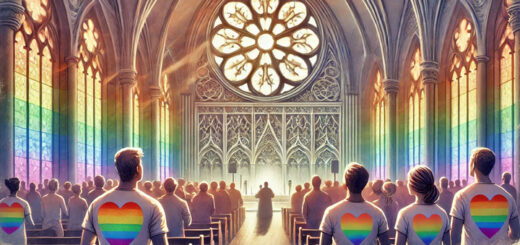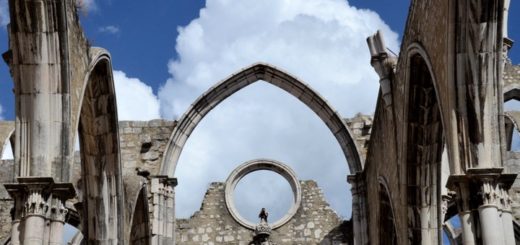Gay Faithful and the Second Vatican Council
 Presentation by Gianni Geraci of Milan’s Guado group at the “Church for All, Church of the Poor” Assembly in Rome, September, 15 2012. Translated from the Italian by Peter L.
Presentation by Gianni Geraci of Milan’s Guado group at the “Church for All, Church of the Poor” Assembly in Rome, September, 15 2012. Translated from the Italian by Peter L.
This presentation is made on behalf of a group of reflection and research on faith and homosexuality called “Guado”. The intent is to give voice to the joys, hopes, fears and anxiety that so many gay faithful experience as they look to the Church in the desire to be welcomed without fear and instead find this very fear itself.
When the Second Vatican Council began 50 years ago, our groups and associations had not yet come about. In fact, our first steps were taken about 20 years ago, towards the end of the 1980s. Therefore, as groups, we did not know the great sense of vitality the Italian Church experienced following the Second Vatican Council. Most of all, we did not get a “taste” of the optimism, born of deep faith, that inspired Pope John XXIII to call Vatican II.
What we have before us today is a Church that is afraid of the contemporary world; a Church that has difficulty sharing in the joys and hopes of today’s people; a Church that looks on what is happening in society with worry; and one that, for this very reason, remains anchored to indefensible positions. Fifty years ago, John XXIII himself had to deal with this type of attitude. It was by no coincidence that his opening speech at Vatican II recalled this theme with the following words:
“In the daily exercise of our pastoral office, we sometimes have to listen, much to our regret, to voices of persons who, though burning with zeal, are not endowed with too much sense of discretion or measure. In these modern times they can see nothing but prevarication and ruin. They say that our era, in comparison with past eras, is getting worse, and they behave as though they had learned nothing from history, which is, none the less, the teacher of life.
They behave as though at the time of former Councils everything was a full triumph for the Christian idea and life and for proper religious liberty. We feel we must disagree with those prophets of gloom, who are always forecasting disaster, as though the end of the world were at hand.
In the present order of things, Divine Providence is leading us to a new order of human relations which, by men’s own efforts and even beyond their very expectations, are directed toward the fulfillment of God’s superior and inscrutable designs. And everything, even human differences, leads to the greater good of the Church.”
Unfortunately, those same “prophets of gloom” have taken the upper hand in the Church and poisoned it with words inspired by mistrust and fear. They have bound her within norms that influence the freedom of expression of individual bishops. They have suffocated her through hundreds of condemnations of theologians who aimed to develop insight resulting from Council.
Those same prophets of gloom have developed out-and-out “terror” of homosexual persons and the relationships they build. They have systematically attacked those inside the Church who have accepted to listen to these persons. Those same prophets of gloom have actively endeavored, particularly from the mid 1980s, to make the Church go backward rather than forward. They got lost in an infinite series of clarifications, recommendations, corrections instructions, norms, sentences and condemnations that had the only aim of caging and reigning in the voice of the Holy Spirit that the Council had brought forth.
It is not a coincidence that in the late 1990s Cardinal Carlo Maria Martini, S.J. acknowledged difficulties that had arisen. He decided to share his dream of a truly Council inspired Church with bishops gathered for Synod: “A third dream is that the festive return of disciples from Emmaus to Jerusalem to meet the Apostles become a stimulus throughout the coming century to occasionally repeat an experience of universal sharing among bishops that can resolve some of the knotty disciplinary and doctrinal issues that have perhaps come up little in recent days, although they do reappear periodically as hot points on the paths of European and non-European Churches.
I believe in general in deepening and developing the ecclesiology of communion from Vatican II. I think of the lack of ordained ministers, which is drastic in some places, and the growing difficulty of a bishop to provide care for the souls in his territory due to an insufficient number of ministers of the Gospel and the Eucharist. I think of some topics regarding the position of women in society and the Church, the role of laity in some ministry-related tasks, sexuality, marriage discipline, penitential practice, relations with the Orthodox Churches, and the need to revive ecumenical hopes, the relationship between democracy and values, and between civil law and moral law.”
This dream of Cardinal Martini helped us to realize that within a Church that seemed boarded-up and unable to listen, there was another Church. This other Church was expressed during the Second Vatican Council, and still lives in a “Council inspired” dimension. This Church wanted to help us abandon our fears and hypocrisy, to come out and to ask our pastors explicitly: “How can we, as homosexuals, fully live out our Christian vocation?” The answer to this question can be inferred from two Vatican II documents:
First of all, in the Gaudium et Spes constitution. Although Council fathers concerned themselves with human love in the framework of heterosexual marriage, the emphasis they gave to spouses fully giving themselves to one another in the relationship can also be applied to gay people. This can especially be applied to gay Christians who are called to witness that they too can live out relationships founded on fidelity, responsibility and a search for the common good.
Secondly, in the Dignitatis Humanae declaration. This is found in emphasis placed on the responsibility Christians have in forming and listening to their own true conscious in an attempt to find concrete roads to living out their Christian vocation fully.
In conclusion, I would like to consider this last point further by reflecting on a question that often emerges in discussing Vatican II: “Was the Council a break with Church tradition or was it a continuation of it?”. The very considerations on freedom of conscious developed in the Digitatis Humanae declaration demonstrate how the Council continued the Church’s long-standing tradition and, at the same time, broke with the narrow interpretation given to its own tradition after the Reformation.
It is true that affirming the primacy of conscious was a true act of rupture with standard practice that had established itself within the Catholic Church (and which, unfortunately, is still followed by the majority of Church hierarchy, priests and the faithful); however, it is also true that this very affirmation does none other than recall the meaning of that very Christian message that the Church itself had welcomed and promulgated in prevalent Western thought.
To understand this, one must simply recall what St. Thomas Aquinas wrote in De Veritate when addressing the comparison between the voice of the conscious and teachings of the Church. “Comparare igitur ligamen conscientiae ad ligamen quod est ex praecepto praelati, nihil est aliud quam comparare ligamen praecepti divini ad ligamen praecepti praelati. Unde, cum praeceptum divinum obliget contra praeceptum praelati, et magis obliget quam praeceptum praelati: etiam conscientiae ligamen erit maius quam ligamen praecepti praelati, et conscientia ligabit, etiam praecepto praelati in contrarium existente.”
The greatest Christian theologian says that the voice of the conscious is the voice of God. He says that when there conflict between the voice of the conscious and the Church’s magisterium, the Christian must obey their own conscious.
With this certainty, we must push forward despite calls that come from those who would shelve the Council. With this same certainty, we must reclaim the Faith that others would have denied to us. With this same certainty, we must defeat the fear that is suffocating the Roman Catholic Church and which is progressively taking her away from the Gospels.
Original text: Gli omosessuali credenti e il Vaticano II






